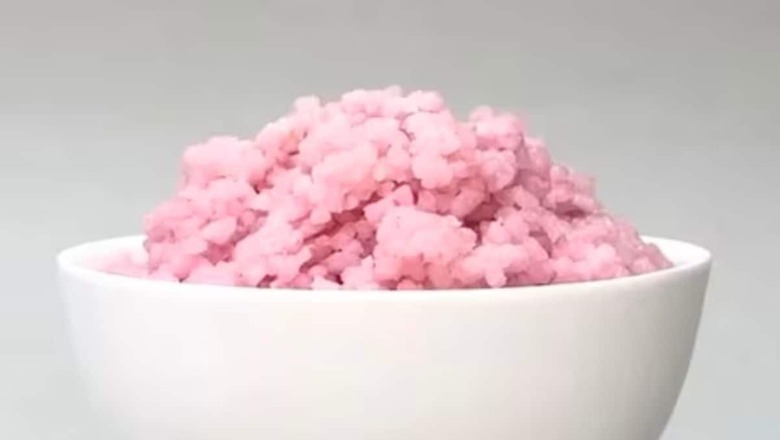
views
All around the world, meat consumption remains prevalent, with people enjoying a variety of options such as red meat, chicken, pork, beef, seafood and more. Beyond its delectable taste, meat offers significant nutritional benefits, including protein, calcium, iron and zinc. However, some types of meat pose challenges due to their tough texture, prompting scientists in South Korea to develop a groundbreaking solution: meat-infused rice.
This innovative product, dubbed ‘meaty rice’ by researchers, is gaining popularity in South Korea as an alternative to traditional meat consumption. Scientists from Yonsei University have engineered this hybrid rice, incorporating various types of meat, including fish, to achieve a texture and flavour resembling that of meat. Notably, meaty rice boasts 8 per cent more protein and 7 per cent more fat than regular rice, offering essential nutrients for consumers.
One of the standout features of meaty rice is its extended shelf life of 11 days, even at normal temperatures, ensuring convenience and practicality for storage and consumption. Additionally, researchers have ensured the quality and stability of the rice, making it suitable for use in diverse scenarios, including during emergencies or in military settings. This aspect holds promise for addressing malnutrition concerns, particularly among young populations and offers a potentially economical protein alternative.
Furthermore, the production process for meaty rice is streamlined, potentially reducing reliance on traditional animal farming methods. Scientists anticipate that widespread adoption of this technology could alleviate environmental pressures associated with livestock farming, notably reducing carbon emissions. For instance, while beef production emits approximately 49.89 kg of carbon dioxide per 100 grams of protein consumed, meaty rice production emits a significantly lower 6.27 kg of carbon dioxide for the same protein quantity.
Despite its promising attributes, the acceptance of meaty rice as a viable meat alternative hinges on public perception and adoption. Overcoming consumer scepticism and establishing trust in this innovative food product pose challenges for its widespread implementation. However, with its nutritional benefits, extended shelf life and environmental advantages, meaty rice stands as a compelling option in the quest for sustainable and nutritious food sources.

















Comments
0 comment